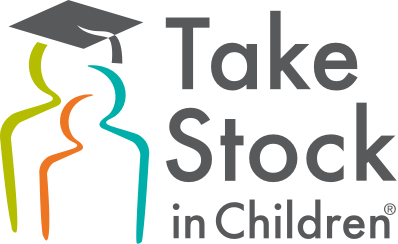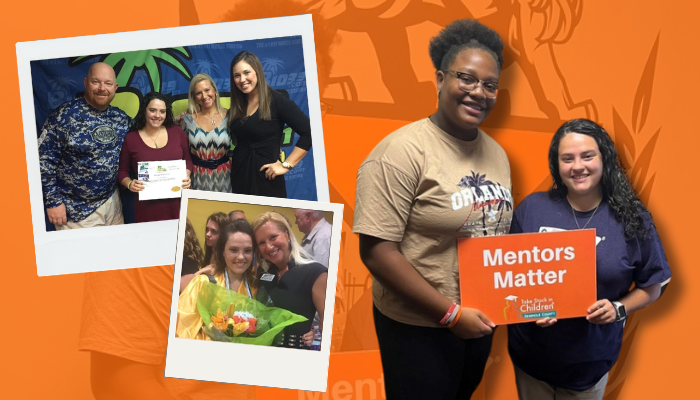February is Financial Aid Awareness Month, and at Take Stock, we want to ensure that our students and Take Stock in College and Career scholars are set up for success in college without the burden of paying for school. That includes taking advantage of every option provided through completing the Free Application for Federal Student Aid (FAFSA).
FAFSA Unlocks Financial Advantages for Students
One advantage of completing the FAFSA is to qualify for the Pell Grant, which is money that does not have to be paid back. Depending on a student’s financial need, a student has the opportunity to receive up to $7,395 in Pell Grant funding. That money can make a difference between a student attending college this fall or not.
The National College Attainment Network (NCAN) reported Florida high school graduates from the class of 2023 left $353,586,858 of Federal Pell Grants unclaimed. With the 2025-2026 form open to the high school Class of 2025 and current college students, families and students must complete their forms early to increase chances for scholarships, grants, work-study, and more.
How Take Stock Alum Marissa Benefitted from the FAFSA
We talked with Take Stock Lee County alum Marissa Michnowicz (2017) about the program grad’s journey through college and utilizing the FAFSA benefits as a first-generation college student.
“Before having the Take Stock in Children scholarship, there was hesitancy whether or not college would be an option,” Marissa said. After receiving the Take Stock in Children scholarship in her junior year of high school, Marissa knew she could go to college and get a college degree. While preparing for college, the alum’s mentor, Michelle, was a great help. “Not only was she there for me through college applications and essays, but she even researched resources to take practice SAT and ACT exams to be more successful on them. She was my support system, encouraging me to keep going when things got rough and when I got discouraged.”
Part of that discouragement was because of the price tag attached to a college education. However, by filling out the FAFSA, Marissa was qualified to receive financial resources, including the Pell Grant. “[Completing the FAFSA every year in college] benefited me personally because I got back a pretty decent amount back in refund money,” Marissa said. This funding supported the scholar with enough money for housing while attending the University of Central Florida.
Marissa’s Additional Smart Choices for College
Aside from submitting the FAFSA early, Marissa decided to save additional money by following a college attendance plan. “A piece of advice a high school teacher gave me that saved me a lot of money in college was that the first two years of college are the same no matter where you go,” Marissa said regarding obtaining the prerequisite college courses in a 2-year institution instead of a traditional 4-year path. “Because the first two years are the same, it is financially more affordable to do your first two years at a community college versus a university. It is also less competitive to transfer to a university as a transfer student than starting at a university.”
Marissa implemented this money-saving method by attending Florida SouthWestern State College for two years and then the University of Central Florida to complete a Bachelor of Arts in General Studies and a Minor in Secondary Education and Math. Looking back at those days in college, Marissa had this to say about navigating financial aid as a first-generation college student, “I think it would have been helpful or not as surprising to know that although scholarships are money I do not have to repay, I did have to pay taxes on them. It was not a lot, but it did come as a surprise. Also, take whatever classes you can take at a state/community college level. It would be cost-effective and often easier at a state/community college, including access to smaller class sizes and personalized help if needed.”
Taking this approach is certainly one way to attain a degree, which should always be a focus for a student. How they reach that goal can be different for everyone. Whether they decide to go to the 2-year, community college, transfer program, or 4-year university route, Take Stock in Children students have additional guidance through the Take Stock in College and Career program. Learn how this initiative supports over 7,000 scholars enrolled in Florida’s 40 public colleges and universities at https://www.takestockinchildren.org/college.
Inspiring Students to Make Smart Money Choices College
Today, Marissa is a dedicated middle school mathematics teacher and proud mentor for the Take Stock Seminole County program. Marissa is passionate about the alum’s journey through Take Stock, using the tools picked up along the way to success to help students who experienced similar circumstances and obstacles the scholar faced growing up. From presenting at college readiness workshops to giving the Class of 2025 graduation speech during Seminole County’s senior celebration this spring, Marissa is ready to support and cheer on the next class of college-bound Take Stock students.
Marissa gave us a preview of that valuable information with some advice for this year’s graduating class. “Seniors can financially prepare for college early in several ways,” the alum shares. “Students can slowly start collecting needed items (i.e. bedding, storage bins, cleaning supplies, etc.). If they can get a job in high school, they can work and start saving. Learn how to budget, use, and save money early on. Getting good grades in school and having plenty of community service hours is another way to financially prepare because those are good stepping stones for scholarships, grants, and the Pell Grant [throughout their college experience].”
Thank you, Marissa, for sharing part of your Take Stock story with us! Best wishes to the Take Stock Class of 2025 on your college preparations! To fill out your 2025-2026 FAFSA, visit https://studentaid.gov/h/apply-for-aid/fafsa.

